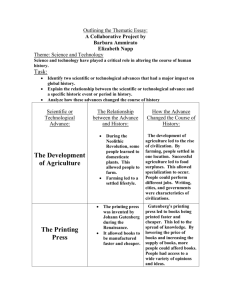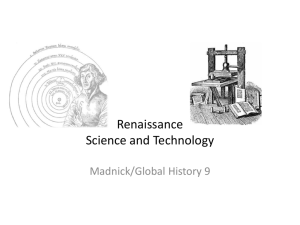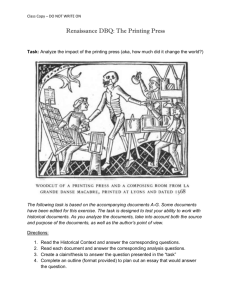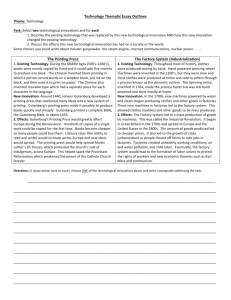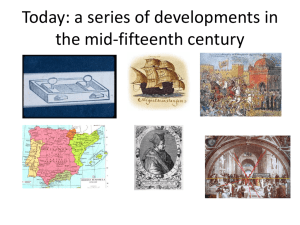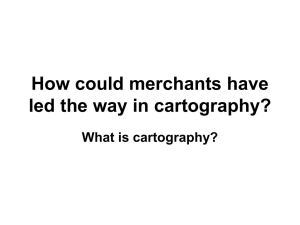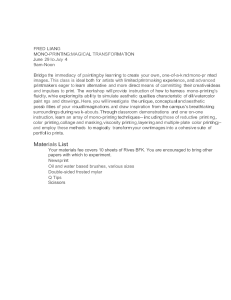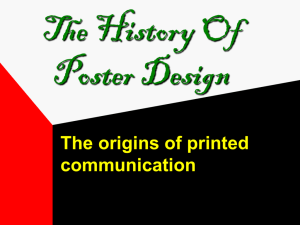The Printing Press: History & Impact
advertisement
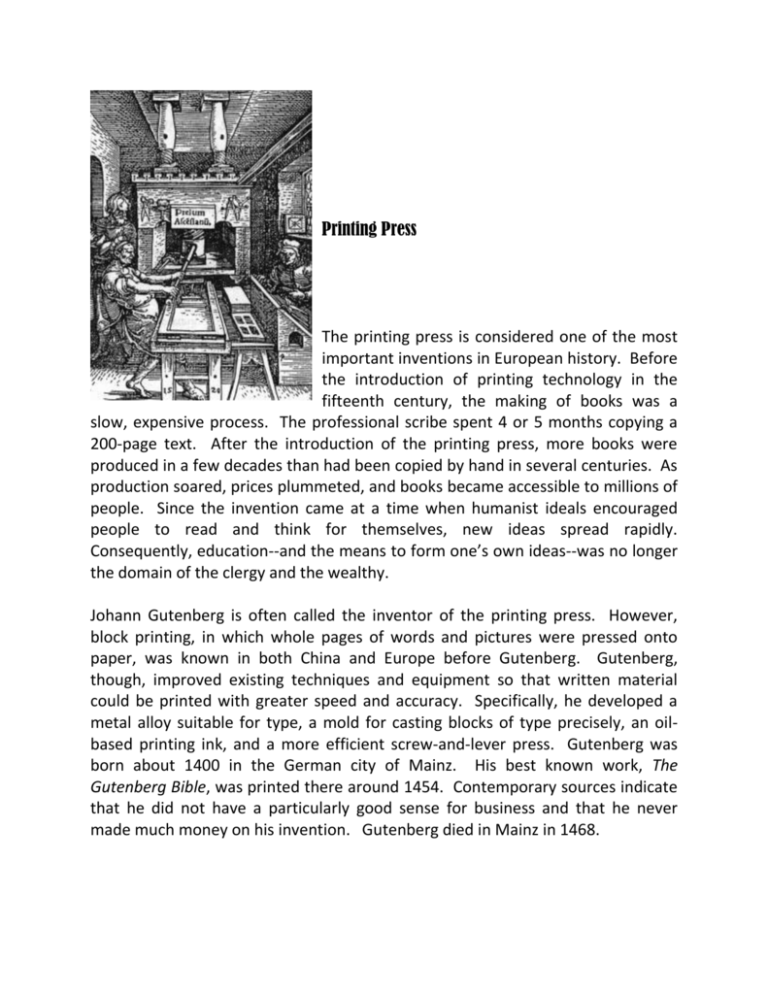
Printing Press The printing press is considered one of the most important inventions in European history. Before the introduction of printing technology in the fifteenth century, the making of books was a slow, expensive process. The professional scribe spent 4 or 5 months copying a 200-page text. After the introduction of the printing press, more books were produced in a few decades than had been copied by hand in several centuries. As production soared, prices plummeted, and books became accessible to millions of people. Since the invention came at a time when humanist ideals encouraged people to read and think for themselves, new ideas spread rapidly. Consequently, education--and the means to form one’s own ideas--was no longer the domain of the clergy and the wealthy. Johann Gutenberg is often called the inventor of the printing press. However, block printing, in which whole pages of words and pictures were pressed onto paper, was known in both China and Europe before Gutenberg. Gutenberg, though, improved existing techniques and equipment so that written material could be printed with greater speed and accuracy. Specifically, he developed a metal alloy suitable for type, a mold for casting blocks of type precisely, an oilbased printing ink, and a more efficient screw-and-lever press. Gutenberg was born about 1400 in the German city of Mainz. His best known work, The Gutenberg Bible, was printed there around 1454. Contemporary sources indicate that he did not have a particularly good sense for business and that he never made much money on his invention. Gutenberg died in Mainz in 1468. Although the printing press significantly reduced the time required to produce written documents, operating the device was a cumbersome and tedious process. In preparation for printing, a sheet of paper was placed securely on the tympan and paper. This entire assemblage was placed under the press’s screw mechanism. By cranking the long lever, the printer lowered the screw until its flat wood surface pressed the paper against the type, making an ink impression. The frisket, sandwiched in the middle, protected the margins of the paper from ink smears but exposed the type to the paper through its cut-out rectangle. The total process of printing one sheet on one side took early printers about 2 minutes. Questions: 1. Who invented the printing press and when? 2. Why is it considered one of the most important technological breakthrough of the 15th century? 3. What was the first book printed? When? Why? How does the printing of this book lead to a revolution throughout Europe?
